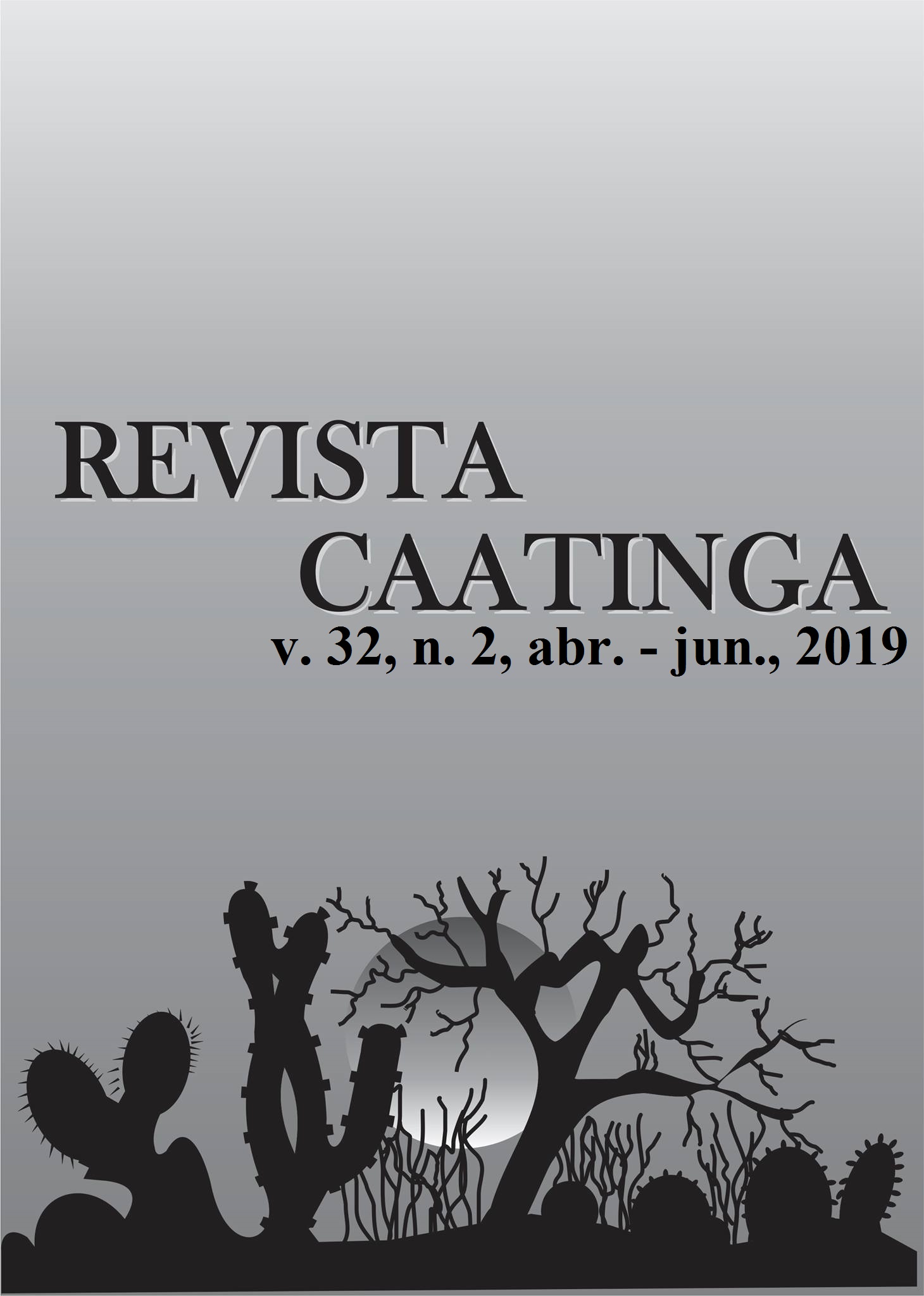GROWTH AND PHOTOSYNTHETIC EFFICIENCY OF Atriplex nummularia UNDER DIFFERENT SOIL MOISTURE AND SALINE TAILINGS
DOI:
https://doi.org/10.1590/1983-21252019v32n222rcKeywords:
Photosynthesis. Halophyte. Water reuse. Salinity.Abstract
The disposal of the tailings (wastes) from desalinators is a growing problem, especially in semi-arid regions, and it is necessary to study halophytes such as Atriplex nummularia for the reuse of these saline waters. Thus, the objective of this study was to evaluate the effect of the interaction between levels of soil water content and salinity of irrigation water, gas exchange and growth of Atriplex nummularia Lindl. The plants were cultivated in vases with soils under two moisture levels (50 and 100% of the field capacity) and irrigated with saline waters from dilution of the desalinator waste, to obtain the following electrical conductivities (EC) of 0.39; 1.54; 2.15; 2.79; and 3.63 dS m-1. The experiment was conducted in a greenhouse for 160 days, with a triple factorial arrangement of 2x5x3, in a randomized complete block design with four replications. The photosynthetic, biometric and plant biomass parameters were evaluated. Irrigation with saline water reduced the net photosynthetic rate (A), stomatal conductance (gs), the effective quantum yield of photosystem II (ΔF/Fm’), photochemical quenching (qP) and the electron transport rate (ETR) of the plants for the two conditions of soil moisture. However, it did not impair the efficiencies of water use (WUE) and carboxylation (EIC) of plants. Plant growth rate and leaf biomass were stimulated under irrigation with saline water (EC ≤ 3.63 dS m-1), and when associated with soil moisture of 100% FC leaf biomass gains > 100% were obtained.
Downloads
Downloads
Published
Issue
Section
License
Os Autores que publicam na Revista Caatinga concordam com os seguintes termos:
a) Os Autores mantêm os direitos autorais e concedem à revista o direito de primeira publicação, com o trabalho simultaneamente licenciado sob a Licença Creative Commons do tipo atribuição CC-BY, para todo o conteúdo do periódico, exceto onde estiver identificado, que permite o compartilhamento do trabalho com reconhecimento da autoria e publicação inicial nesta revista, sem fins comerciais.
b) Os Autores têm autorização para distribuição não-exclusiva da versão do trabalho publicada nesta revista (ex.: publicar em repositório institucional ou como capítulo de livro), com reconhecimento de autoria e publicação inicial nesta revista.
c) Os Autores têm permissão e são estimulados a publicar e distribuir seu trabalho online (ex.: em repositórios institucionais ou na sua página pessoal) a qualquer ponto antes ou durante o processo editorial, já que isso pode gerar alterações produtivas, bem como aumentar o impacto e a citação do trabalho publicado (Veja O Efeito do Acesso Livre).







